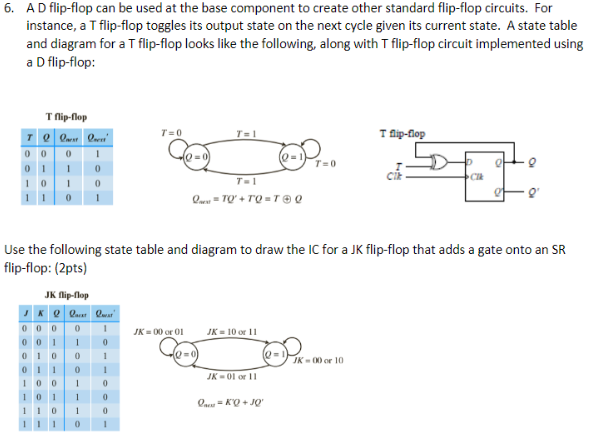A D flip-flop can be used at the base component to create other standard flip-flop circuits. For instance, a T flip-flop toggles its output state on the next cycle given its current state. A state table and diagram for a T flip-flop looks like the following, along with T flip-flop circuit implemented using a D flip-flop: T flip-flop Qnext = TQ′+TQ = T⊕Q Use the following state table and diagram to draw the IC for a JK flip-flop that adds a gate onto an SR flip-flop: (2 pts) JK flip-flop Qnext = K′Q+JQ′
